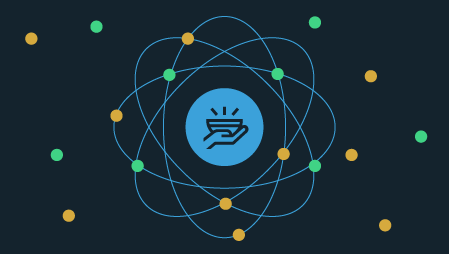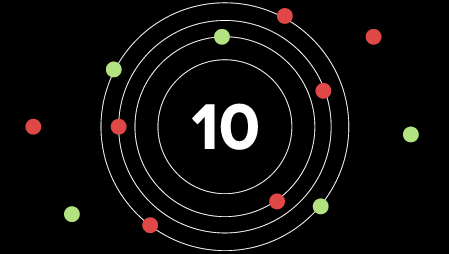- Strengths: Solid technology, large ecosystem, many devices, low cost, low predictable power consumption, managed service.
- Weaknesses: Relies on Ultra Narrow Band (UNB) technology combined with DBPSK and GFSK modulation using 200 kHz of unlicensed spectrum in the 868 to 869 MHz and 902 to 928 MHz bands depending on regions. Limited network coverage in the US since the company did not reach its 2017 buildout goals. Immature ecosystem but improving rapidly.
- Business model: Business model flaws in subscription-based connectivity at low cost.
- Strengths: solid technology, large ecosystem but largely private (not generally accessible) but improving, low cost, low not-as-predictable power consumption, it is mostly private and (mostly) not offered as a managed service.
- Weaknesses: No central service manager or clearinghouse to interoperate networks (not a managed service – both a pro and a con), wide scale coverage in its infancy, needs a more robust open ecosystem. Monopoly (thus far) on chips make devices a little more expensive.
- Business model: Senet is the largest US-based provider of LoRaWAN IoT technology with network coverage in 225 markets. Recently launched Low Power Wide Area Virtual Network (LVN) to offer IoT connectivity solutions for cable, CLEC and wireless operators. Comcast is also expanding its LoRa LPWAN-based network to 12 US markets.
Ingenu
- Strengths: Random Phase Multiple Access (RPMA®) technology uses the unlicensed 2.4 GHz ISM band. Supports higher speeds, closer to LTE in functionality. Ingenu reports its US network currently covers around 45 million POPs.
- Weaknesses: Expensive network and solution. CEO John Horn abruptly left Ingenu during the summer of 2017. looks unlikely to survive.
- Business model: subscription based
- Strengths: narrow band modulation scheme, can operate in both sub-1GHz license exempt and licensed spectrum, offers full acknowledgement of 100% of uplink traffic for unmatched QoS in a system operating in unlicensed ISM and SRD spectrum
- Weaknesses: guarantee low cost and low risk, and to maximize user choice and ongoing innovation.
- Business model: Open global standard promoted by a SIG rather than a specific company with a proprietary technology
NB-IOT (CAT-NB1)
- Strengths: carrier-backed, ubiquitous coverage due to it being an LTE upgrade, with higher data rates possible.
- Weaknesses: more expensive in terms of power consumption and device cost than other LPWAN technologies such as LoRa or Sigfox. The requirement for a SIM and pairing of some sort may also be an issue – compared to LPWANs that are paired at the factory.
- Business model: T-Mobile is the only major US carrier to deploy NB-IoT as its low power wide area (LPWA) network of choice. Verizon recently completed its first successful NB-IoT Guard band data session trials and plans to deploy an NB-IoT network across Verizon’s nationwide network in 2018.
- Strengths: becoming pervasive – it offers higher data rates than LPWAN, but at higher cost and power consumption.
- Weaknesses: Cat M probably provides the high end of the “LPWAN” segment.
- Business model: Verizon, AT&T and Sprint have all opted for LTE-M, another LPWA technology standardized by 3GPP, and have completed their initial nationwide LTE-M launches in 2017
T-Mobile became the first US operator to launch NB-IoT commercially and has committed to extend coverage to a nationwide NBIOT network during 2018. This would be a major feat if accomplished, and the announced pricing is aggressive and will give the LPWAN players pause. T-Mobile parent Deutsche Telekom recently updated its plans for its narrowband-IoT (NB-IoT) rollout across Europe. DT launched NB-IoT technology in Germany in 2017, and the network is now available in approximately 600 towns and cities across its home market, with more than 200 companies trialing the technology. This DT NB-IoT network deployment in six of its European markets was on track at the end of 2017, including Germany, Poland, Slovakia, Czech Republic, Hungary and Greece.
Key enterprise verticals and horizontal applications require true national coverage and need to integrate multiple IoT network technologies. Among these, the following have enterprises that can integrate their own IoT network solutions and others that cannot develop their own solutions.
- Shipping and logistics/supply chain: Much of the supply chain is national in scope and needs national coverage – pallets, shipping containers, truck trailers, etc. But a portion is also local. Use case is to track location and sense temperature and shock/vibration. Local = the last mile of product distribution, think local warehouse to convenience store for consumer goods, for example. Multiple modes are needed. Examples: a pallet en route may need to report location only when it starts or stops (LPWAN), but a pallet in a warehouse may need to report its contents to a smartphone (Bluetooth).
- Agriculture: Reasonably localized per customer, but national in scope with big areas in California and the Midwest. Ag requires large coverage areas with modest populations. Use cases = many and varied: tracking, soil sensors, moisture sensors, tank monitoring, and many more. Multiple technologies may be required – LPWAN for remote areas and fields, Bluetooth for applications expected to communicate to a smartphone.
- Facilities and spaces: Localized per customer, but national in scope … such as major hotel chains like Marriott or Hyatt. Shopping malls and office complexes and resorts and casinos and theme parks are largely localized, but there may be many facilities under the same owner nationwide. Use cases include a varied portfolio – door open/close, irrigation on/off, soil moisture monitors, water leak detectors, buttons to provide a service, and many more.
- Industrial: Usually localized coverage when talking about the factory or enterprise, but national when talking about supply chain. Use cases are varied: track inventory or tools within a factory facility, fuel tank levels, panic buttons for personnel, personnel tracking for safety, etc.
IoT network integrators and connectivity providers can leverage all these technologies and match the right IoT network technology to each use case and application. IoT is not a “one size fits all” environment in terms of connectivity. Every application and use case is different and connectivity requirements need to be evaluated on an individual use case basis. There are many parameters: cost, power consumption, latency, range, application, etc. Bluetooth may be the right answer for some, Wi-Fi may be the answer for others, LPWAN for still others.



